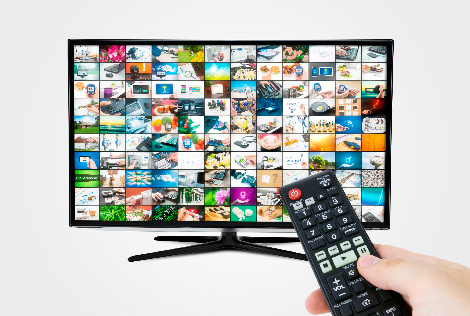On-demand TV allows viewers to time-shift television programming to watch at their leisure and not necessarily according the program’s network air time. Content is typically, but not limited to, current and past television shows, movies, and the networks’ original programming.
More than half of U.S. homes—about 56%—have access to video-on-demand in some capacity, and this number is expected to grow to more than 66% by 2017. On the surface, on-demand offers advertisers a new opportunity for targeted TV media buying. Still, it’s important to evaluate the advantages and disadvantages that on-demand advertising offers your brand.
The Value of On-Demand TV Media Buying
Digital video consumption has become such a staple for households and marketers that online video now has its own version of the annual TV upfronts to buy advertising: the Newfronts. However, marketers who are used to buying their media on networks or on cable should have different expectations for buying TV advertising on demand. Let’s start with the advantages.
Programming is Available Across Multiple Platforms
Viewers can watch on-demand shows:
- Online through a network’s website.
- On a streaming video service like Netflix, Hulu, or Crackle.
- With a cable TV and satellite subscription.
As a result, there is a wide variety of opportunities for advertisers to connect with different audiences.
Ads Can Prevent Fast-Forwarding or Skipping
When DVRs became a fixture in American households, there was initially concern by advertisers that their ads would not be watched because the technology allowed viewers to bypass them. One attractive feature for marketers is that VOD ads decrease the likelihood of ads being intentionally skipped by viewers. Some formats disable the fast-forward feature or they do not make one available in the ad. Others require viewers to watch a certain amount of the video before they can skip ahead.
Ads Are More Accessible for Anytime, Anywhere Viewing
People are spending more and more time consuming media on mobile devices. Even when they are at home, there is still tons of research that shows that people use multiple screens while watching television. VOD media buys allow your viewer to see your ad whenever they watch, and mobile devices let viewers see ads wherever they are.
On-Demand Provides Less Ad Clutter with Fewer Ads
There is less ad clutter or competition for the viewer’s attention with an on-demand media buy. Commercial breaks last on average 13 minutes for an hour-long show on broadcast TV and almost 17 minutes on cable. Hulu, by comparison, carries two 30-second spots during a half-hour show.
On-Demand Offers Targeting for Local and National Advertising
Whether you are a big company looking to advertise or a local legal firm considering TV advertising for lawyers, you can target your ads to reach most geographic locations and DMAs, and you can drill deeper to into online behavior within those locations. This allows you to target your ads to the demographic and audience that you want, unlike on broadcast TV where you are getting a target audience but also paying for viewers that are not your focus.
On-Demand Can Help a Brand’s “Cool” Factor
An overwhelming majority of Hulu viewers, 82%, falls into the 18-to-49-year-old demographic. If you are a company trying to reach this demographic, the decision to advertise on a progressive, nontraditional format like VOD can position your company as being trendy and digitally hip.
The Drawbacks of On-Demand TV Media Buys
On-demand TV buying is still relatively new, so while they are many reasons it works for some brands, there are still some drawbacks to consider before investing in it.
Technological Issues Still Exist
For many years, media buyers found a major drawback when placing ads for on-demand TV buys: the lead time between switching out ads. In the past, it could take weeks for an advertiser to switch out one ad for another. As a result, content could be old and promotions outdated. Over the past couple of years, marketers have introduced “dynamic ad insertion” technology. This allows marketers to switch out and replace their ads in as little as 24 hours in some cases.
On-Demand Still Has Limited Reach
Ads are considerably less expensive than a traditional television ad for the same show on broadcast or cable, because VOD advertising still reaches only a little more than 1% of the audience that broadcast or cable does. Another consideration is that streaming on-demand sways overwhelmingly younger, so VOD is not the best media buy for products or services looking to reach an audience over 50.
So, ultimately, does on-demand TV bring value? It does bring some value if it is important for you to reach a more targeted audience, have less competition, and develop a digitally hip perception. It may offer less value if you want to reach older TV viewers and larger audiences. On-demand can be an effective addition to a media plan, but like any ad platform, it’s only as valuable as your audience’s response.
Learn more about on-demand and traditional TV media buying. Talk to one of the expert media strategists at Capitol Media Solutions and let us customize a plan for your company.

